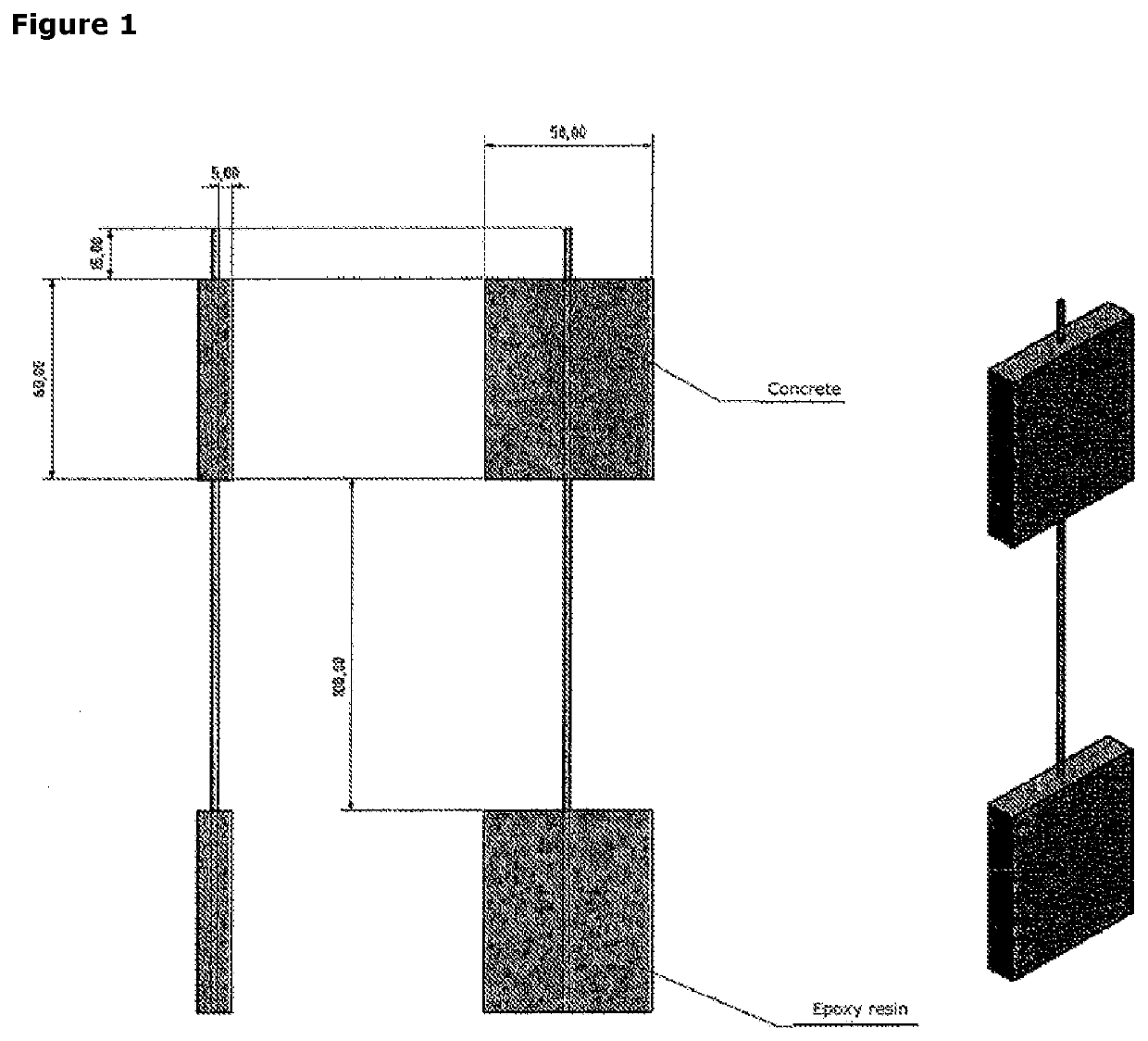Fiber products with a coating formed from aqueous polymer dispersions
a technology of aqueous polymer dispersions and fiber products, which is applied in the field oftextile fiber products, can solve the problems of high requirements for coating materials to be selected, the tendency of reinforcing steel to corrosion, and the narrow time window for processing (pot time) to achieve the effect of optimum introduction of force and sufficient resistance to alkaline environmen
- Summary
- Abstract
- Description
- Claims
- Application Information
AI Technical Summary
Benefits of technology
Problems solved by technology
Method used
Image
Examples
examples
[0056]Using the process according to the invention, coated fibrous products and corresponding textile-concrete composite materials resulting therefrom were prepared. For this purpose, the polymer dispersions according to the invention were at first applied to carbon fibers of the type 3200tex from TohoTenax by soaking, followed by drying at 160° C. From the fibrous products obtained according to the invention, test specimens for determining the tensile strength at room temperature (RT), at 100° C. and after storage on alkali were prepared (see characterization methods / tensile test). Further, textile-concrete composite materials were prepared by embedding the fibrous products coated according to the invention in fine-grained concrete (test specimen see FIG. 1), and subjected to an extraction test (see characterization methods / extraction test).
[0057]In the same way, Examples with glass and basalt fibers as well as Comparative Examples with polymer dispersions not according to the inve...
PUM
| Property | Measurement | Unit |
|---|---|---|
| glass transition temperature | aaaaa | aaaaa |
| temperature | aaaaa | aaaaa |
| temperatures | aaaaa | aaaaa |
Abstract
Description
Claims
Application Information
 Login to View More
Login to View More - R&D
- Intellectual Property
- Life Sciences
- Materials
- Tech Scout
- Unparalleled Data Quality
- Higher Quality Content
- 60% Fewer Hallucinations
Browse by: Latest US Patents, China's latest patents, Technical Efficacy Thesaurus, Application Domain, Technology Topic, Popular Technical Reports.
© 2025 PatSnap. All rights reserved.Legal|Privacy policy|Modern Slavery Act Transparency Statement|Sitemap|About US| Contact US: help@patsnap.com

